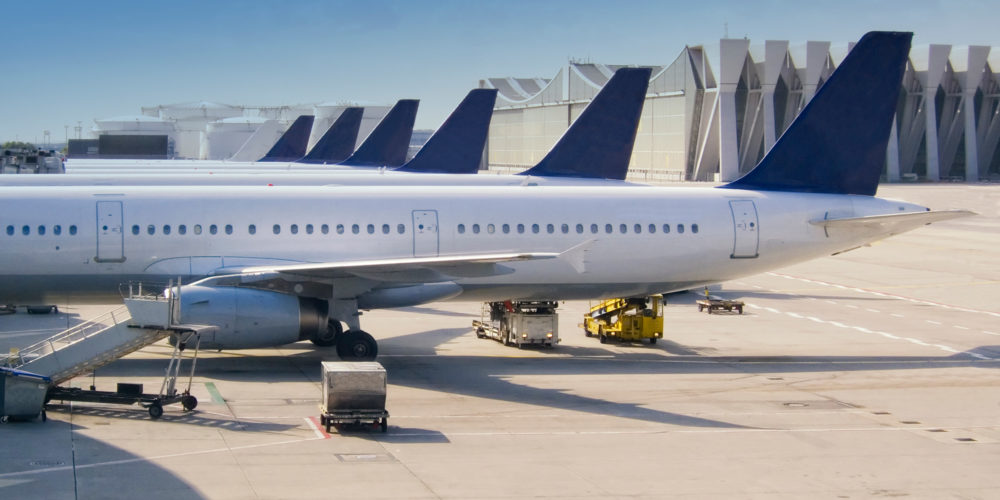Forecasts predict about 50 percent of the world’s commercial aircraft fleet will be leased by the end of 2016. With estimated annual growth of about six percent, the aircraft leasing industry reports its top 50 lessors alone manage 7,500 aircraft valued at $200 billion. Mergers and acquisitions have led to consolidation, and countries like Ireland are becoming leasing hubs. A case in point: China Construction Bank recently elected to locate the global headquarters of its growing aircraft leasing business in Dublin, Ireland – the fourth such business to do so directly in recent years.
Because of the growing popularity of aircraft leasing, it’s important to understand the variables that impact a lease transaction and how to model cash flows. A lease is a contractual obligation between a lessee (usually an airline) and lessor (leasing company). The lessee has the right to use the asset (an aircraft) and in return must make periodic payments to the lessor, the owner of the asset.
From an airline perspective, the lessee (airline) is trying to make a financing decision between leasing an aircraft vs. purchasing the aircraft. When an airline purchases an aircraft it can get depreciation and interest tax benefits and is able to resell the aircraft. Operating leases, on the other hand, provide an airline with the flexibility of using the aircraft without a large upfront payment and the airline transfers residual value and technology risk (the risk that newer, more efficient technology will make older models obsolete) to the lessor by returning the aircraft to the lessor at the end of the lease. An airline frequently also engages in sale and leaseback transactions, where it sells an aircraft it owns to a lessor and immediately leases it back. The sale results in an immediate cash infusion to the airline; and when the airline leases it back, it is able to continue to use the aircraft.
Aircraft Leasing Growth
Leased aircraft as a percentage of total aircraft fleets have increased substantially since the beginning of commercial air travel. Leases increased from 15 percent to 36 percent of commercial fleets between 1990 and 2010, and are projected to increase to 50 percent by 2020. Source: Boeing
From a lessor’s perspective, some of the key cash flows that affect a lease transaction include the purchase price, rent (lease rate), maintenance reserves, and residual value and transaction costs. All of these factors will impact the lessor’s return calculations.
Let’s briefly review each of these variables.
Purchase price can be thought of as the current market value of an aircraft. Because purchase prices are not often disclosed, it can be difficult to get a sense of what the true price is. Also, the industry standard is to think of current market value as the value of an aircraft in half-life condition (halfway between significant overhauls of major parts and components). From a modeling perspective, one should think of current market value as a price the lessor should pay for an aircraft and expect to make a fair return on the investment in the medium term.
The next important factor is lease rate. Lease rates are often affected by current economic conditions, the purchase price, creditworthiness of the lessee and political risks faced by the lessor.
The third key cash flow to the lessor is maintenance reserves. Maintenance reserves act as a risk mitigant for the lessor and help cover the cost of major maintenance events (airframe heavy check, landing gear overhauls, engine performance restoration and others), if the lessee defaults. Therefore, maintenance reserves can be thought of as both a cash inflow and outflow. The lessee contributes maintenance reserves to the lessor who then draws from these reserves to pay for any maintenance costs incurred by the lessee.
Residual value of the aircraft at the end of the lease is another crucial factor that affects the lessor’s cash flow. The lessor will want to maximize the residual value by leasing the aircraft to the same lessee; finding a new lessee; or selling or leasing individual parts like the airframe and engines.
Finally, the lessor should take into account transaction costs such as additional insurance, closing costs on the loan and interest charges, if the aircraft is debt financed.
To model successful lease transactions, one must assess the above cash flows and use an Excel model to determine the purchase price the lessor should pay to get a fair and adequate return on their investment using capital budgeting tools such as Net Present Value and Internal Rate of Return.
With an increasing number of aircraft lease transactions on the books, all parties—from students to seasoned professionals—should know how to recognize lease cash flows and make good investment decisions. Students at Embry-Riddle’s Daytona Beach Campus learn how to model a lease transaction as part of the Master of Science in Aviation Finance degree program, as well as the International Society for Transport Aircraft Trading University Certificate Program, a graduate-level six credit hour course, which launches online in October 2016.
Vedapuri S. “Sunder” Raghavan, Ph.D., is the Seno Distinguished Professor of Aviation Finance in the College of Business at Embry-Riddle’s campus in Daytona Beach, Fla.
